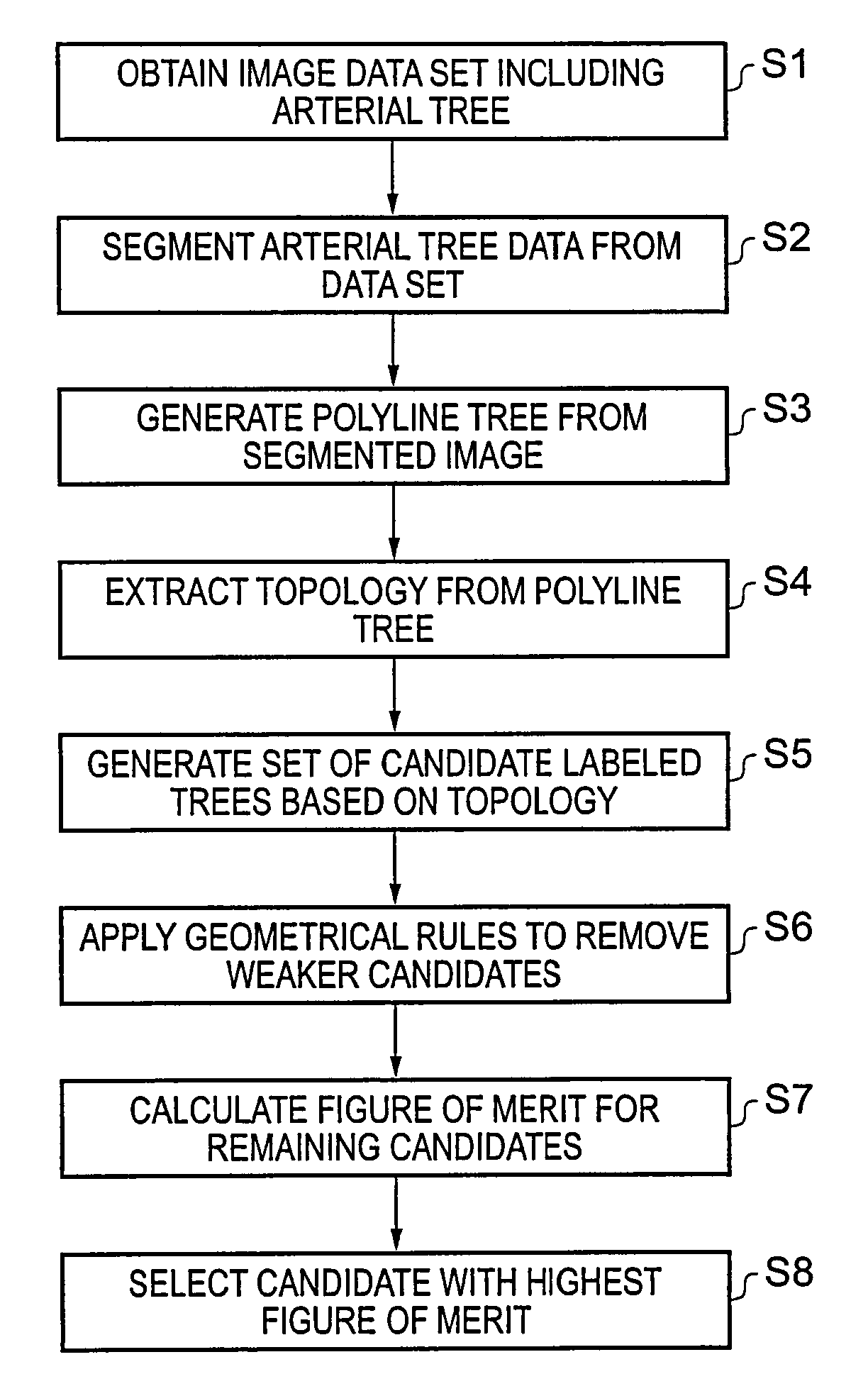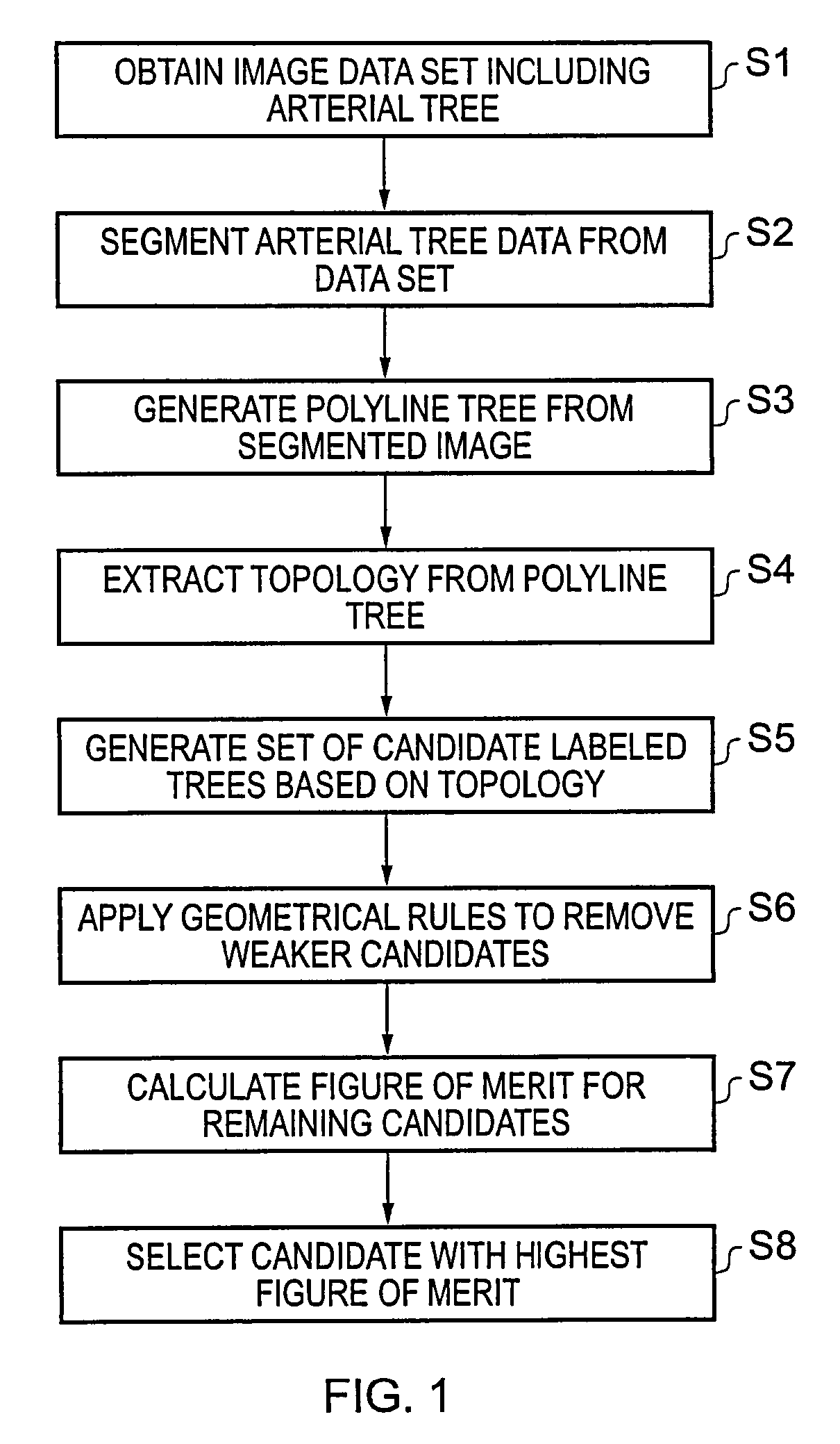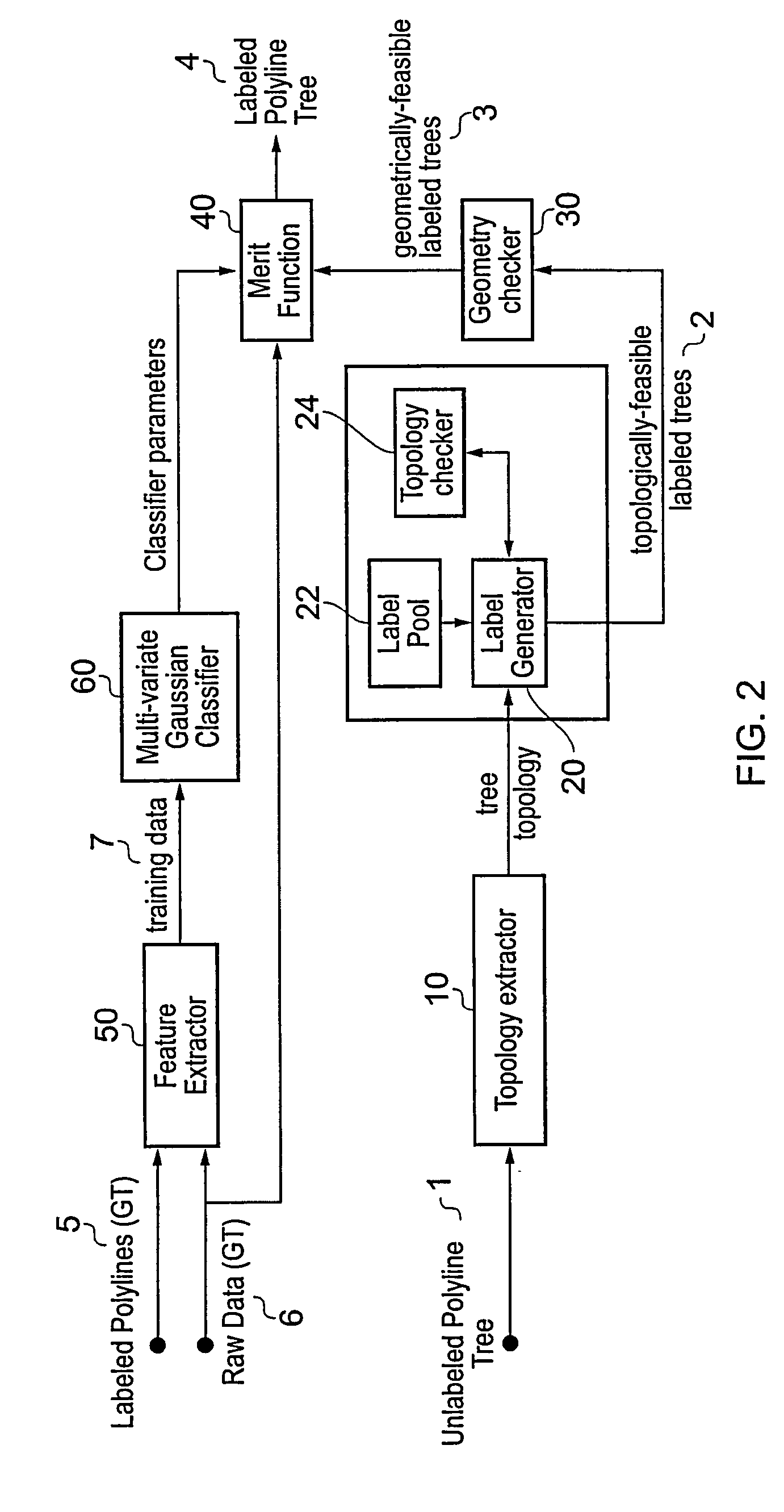Method and apparatus for classification of coronary artery image data
a technology of image data and classification method, applied in image enhancement, medical/anatomical pattern recognition, instruments, etc., can solve the problems of requiring a lot of computation time and power, and achieve the effect of reducing the effect of any anatomical peculiarities
- Summary
- Abstract
- Description
- Claims
- Application Information
AI Technical Summary
Benefits of technology
Problems solved by technology
Method used
Image
Examples
Embodiment Construction
[0029]The human coronary arterial tree comprises the left and right main coronary arteries which branch off from the ascending aorta, and a number of successively smaller vessels which branch off from the main arteries. The present invention seeks to provide a technique for automatic classification and labeling of the various vessels included in a three-dimensional image of the arterial structure. The technique uses filtering based on topological and geometrical parameters to obtain a set of potentially correctly labeled candidates for an imaged arterial tree. A figure of merit is calculated for each member of the set, and the candidate with the best figure of merit is output as the final labeled tree.
[0030]FIG. 1 shows a flow chart indicating the steps in an example embodiment of this technique.
[0031]Step S1 requires that a volume data set be obtained which includes the arterial tree of interest. The data may be recorded using any suitable imaging technique. Then, in step S2, the a...
PUM
 Login to View More
Login to View More Abstract
Description
Claims
Application Information
 Login to View More
Login to View More - R&D
- Intellectual Property
- Life Sciences
- Materials
- Tech Scout
- Unparalleled Data Quality
- Higher Quality Content
- 60% Fewer Hallucinations
Browse by: Latest US Patents, China's latest patents, Technical Efficacy Thesaurus, Application Domain, Technology Topic, Popular Technical Reports.
© 2025 PatSnap. All rights reserved.Legal|Privacy policy|Modern Slavery Act Transparency Statement|Sitemap|About US| Contact US: help@patsnap.com



